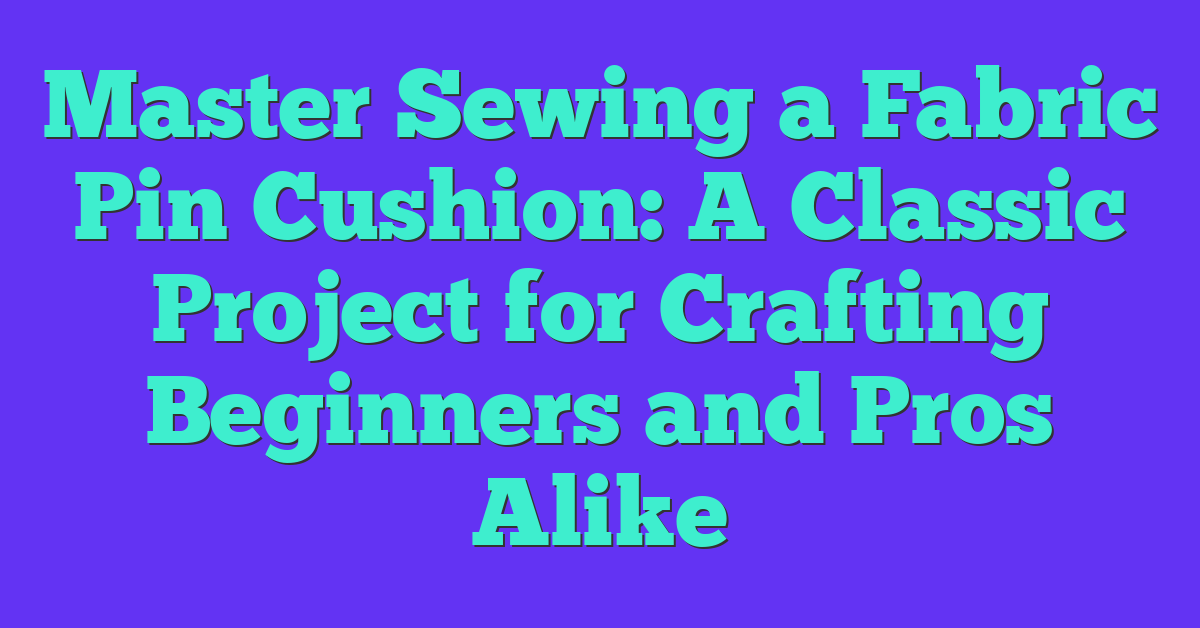I remember the first time I tried sewing a ladder stitch for a closure. It seemed tricky at first, but once you get the hang of it, it’s a game-changer for your projects. Whether you’re hemming a pair of pants or adding a neat finish to a pillow, the ladder stitch offers a seamless look that’s both professional and discreet.
What Is a Ladder Stitch?
A ladder stitch, also known as an invisible stitch, creates a seamless closure for various sewing projects. It involves interlocking threads on the inside of the fabric, making the stitches nearly invisible from the outside. This technique is ideal for hemming garments, closing pillow seams, and finishing envelopes in crafts. By using the ladder stitch, I achieve a professional and discreet finish that enhances the overall appearance of my projects.
Key Features of the Ladder Stitch
- Invisibility: Hides stitches from the exterior, providing a clean look.
- Flexibility: Suitable for different fabric types, including knits and wovens.
- Strength: Ensures secure closures without bulk.
- Efficiency: Allows for quick and precise stitching in tight spaces.
Common Applications
- Hemming Pants: Achieves a neat finish without visible stitching.
- Pillow Finishes: Closes pillow seams seamlessly, maintaining fabric integrity.
- Craft Projects: Perfect for handmade envelopes and small fabric items.
Materials Needed
- Needle: Fine-tipped for precision.
- Thread: Matching color to blend with fabric.
- Fabric Pins: Optional, to hold fabric edges together during stitching.
Using these elements, the ladder stitch provides a reliable method for creating polished and professional results in various sewing endeavors.
Tools and Materials
- Fine-Tipped Needle: Ensures precise stitching with minimal visibility.
- Matching Thread: Blends seamlessly with fabric for an invisible finish.
- Fabric Pins: Holds fabric edges securely while I stitch.
- Scissors: Cuts thread and trims excess fabric accurately.
- Thimble: Protects my fingers when pushing the needle through thick materials.
- Tape Measure or Ruler: Measures fabric lengths to maintain consistent stitch placement.
How to Sew a Ladder Stitch
Sewing a ladder stitch creates a seamless closure for your projects. Here’s how I do it step by step.
Step 1: Preparing the Fabric
I align the fabric edges carefully to ensure a neat finish. If needed, I use fabric pins to hold the edges together securely. Smoothing the fabric prevents any puckering during stitching.
Step 2: Starting the Stitch
I thread my needle with a matching thread, tying a secure knot at the end. Beginning from the inside edge keeps the knot hidden and the stitch discreet.
Step 3: Creating the Ladder
I make small, even stitches on one side of the fabric edge. Then, I repeat on the opposite side, keeping the threads parallel. By alternating stitches on each side, I form the characteristic ladder pattern.
Step 4: Finishing the Stitch
I secure the final stitches by tying a tight knot inside the fabric. After ensuring the knot is hidden, I trim any excess thread for a clean finish.
Tips for Perfect Closures
- Select Appropriate Thread: Matching thread color blends stitches seamlessly with fabric, enhancing invisibility.
- Utilize Sharp Needles: Sharp needles glide through fabric effortlessly, reducing puckers and ensuring smooth stitches.
- Maintain Even Tension: Consistent thread tension prevents loops and uneven closures, resulting in a professional finish.
- Secure Stitches Properly: Starting and ending with secure knots keeps closures strong and prevents unraveling.
- Trim Excess Thread Carefully: Cutting threads close to the fabric edge avoids bulkiness and maintains a clean appearance.
- Practice Consistent Stitch Length: Uniform stitches create a neat ladder pattern, enhancing the overall look of the closure.
- Reinforce High-Stress Areas: Additional stitching in frequently handled areas ensures durability and longevity of the closure.
Conclusion
Learning the ladder stitch truly transformed my sewing projects. Seeing those invisible closures come together was incredibly satisfying. With a little practice you can easily master this technique and enhance the look of your handmade items. I encourage you to give it a try and enjoy the polished results it brings to your work. Happy stitching!

















